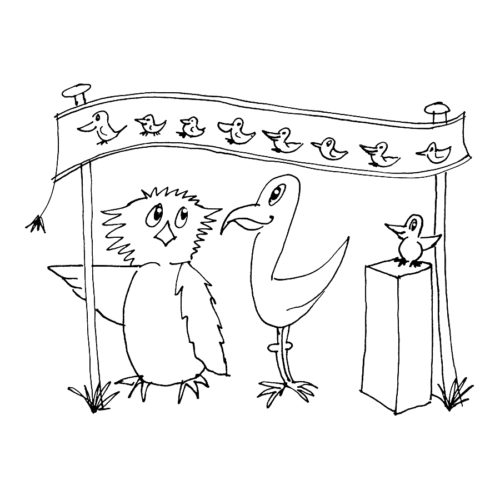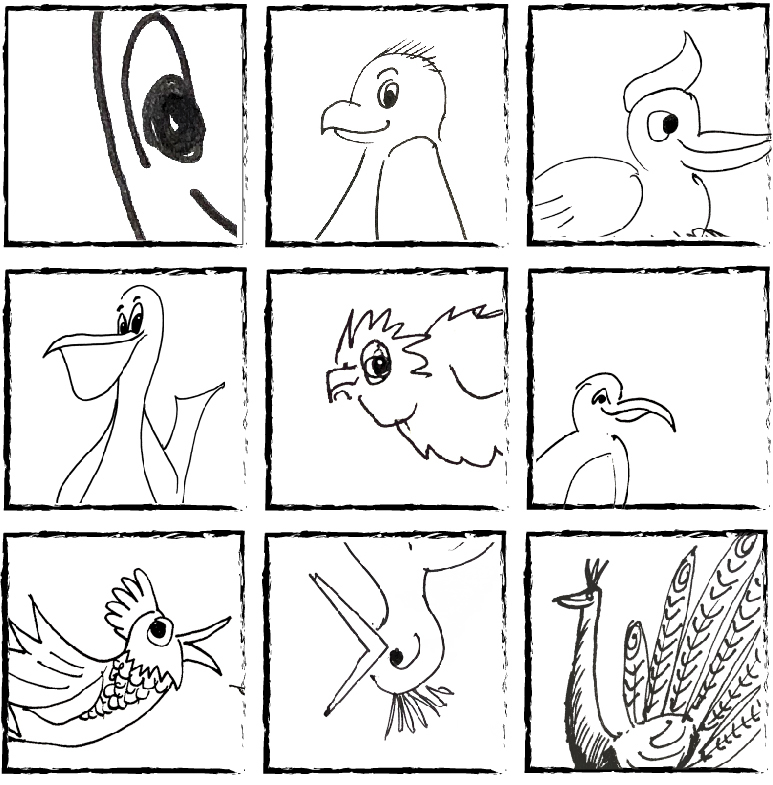#6 Be Heard: how to get results from your social media
For the micro entrepreneur, start-up and small business owner, social media hands us a microphone to help amplify our ideas and messages throughout our regions, countries and around the world.
Social media is also an opportunity to connect and learn from others outside our personal networks. Here’s how to start getting results.
Social media is free to use for anyone with an internet connection. Download the app and away you go… Great free promotion!
But hang on… Social media can be a lot of work for little reward UNLESS you research, target and plan your activity. To enjoy successful social media you need a good social media strategy.
“Everything connects” Leonardo da Vinci

Working out a social media strategy…
Today, the most popular social media platforms include: Twitter, Facebook, Instagram, YouTube, Pinterest, LinkedIn and TikTok with new ones emerging all the time. You probably have your own personal favourites.
Being in business, however, is different. It does not mean we must automatically use social media. Beware people who say: “You MUST be on Twitter…” or, “What! You’re not on TikTok?”
Your business social media should not be about personal preferences, following the latest trend, or what a well-meaning friend might say. Business social media should be focused on our customers’ and clients’ preferences: what platforms they use, what they respond to and want to know.
Some people who set up in business rush to sign up to a range of social media accounts. They spend too much time posting at random and quickly become frustrated because they don’t get the results they expected, saying, “Social media is a waste of time! It doesn’t work…” And they are right. For them social media won’t work because they don’t understand what they are doing or have a strategy to get results.
In order to create the right social media strategy and make the best use of your time and effort you need to start by getting clear on your needs, expectations and goals. Here at Micro Oiseau we asked ourselves these questions, so, here to help you, we’ve supplied our answers:
1. Why do you want to use social media?
We want people to get to know and trust us. We want to promote what we do. We want people to find us easily. Remember: trust is a huge part of the buying process.
2. What results do you want from social media?
We want to build an audience of like-minded people, a community that will choose us for trusted information and translator referrals over a competitor when they are ready to buy. Forget fast sales, social media requires patience and strategy.
3. Which apps are you going to choose and why?
- Twitter for the broad and supportive translator community
- LinkedIn for translator groups/community and also business startups groups and referrals
- Facebook for translator groups, community, small business owners
- Instagram for small business community, entrepreneurs and startups
Focus your efforts where you will find most of your customers….
If you have a dog grooming service Facebook, Instagram and YouTube offer great visual showcase for what you do. Think about it. Most people will not visit YouTube to find an accountant.
If you are an accountant look for interest groups across LinkedIn and Facebook and join in the conversations. With 18 to 24-year-olds’ as its largest user group, TikTok shouldn’t be your first thought!
If you are an artist or musician, think about how and where art and music fans go to find inspiration and share. These may include, YouTube, Instagram and TikTok.
If you discover that your customers use little or no social media, then you would be a busy fool if you decided you had to! But remember, if your products or services are for the very young or very old, although they won’t use social media, their families and influencers will.
Monitor engagement and response and change what you do depending on your results.

4. What are you going to share, and why?
We will share great free marketing guides and support. We will showcase talented translators through different languages, high-quality profiles and Google rankings. We will repost information of interest and signpost services, we will encourage and engage.
What you share should be guided by your customer research and always in line with your values or brand behaviour. It needs to focus on your customers’ needs. In this way you will build trust, engage and signpost them to your website.
Websites are where buying decisions are made, so don’t forget to add your link to your posts!
5. Time: how much should you spend on social media?
We’re going to dedicated time every week to create content, schedule posts and review results.
Social media can be a hungry monster and it takes time to build an audience. Keep in mind this is a marathon not a sprint and, unless you can pay a social media company to create and run campaigns for you, the best advice is to forget quick results. Your route to success is about making your social media a habit through a realistic and regular posting schedule. Posting content that will attract and engage the customers you want. Use one platform well. Not three badly. Later in our guide we look at post frequency.
Tip: how find like-minded people
To find groups of people talking about and sharing content on a particular subject use a hashtag #.
Hashtags are used in social media posts like subject labels and they help people find content they are interested in, for example: #translation, #holidays #vegan. You can perform a hashtag search on each social media platform to find ones that are currently popular and/or useful to you. You can also make up your own, using it each time you post. It’s important not to use too many. Two to four is ideal on most social media platforms, however, Instagram is different and allows up to 30.
Another good tip is to use capital letters in a word string. This ensures that screen reading technology used by partially sighted or blind people can identify the individual words. For example: #MicroWins #MarketingGuides.
Using hashtags in your posts will help people find you and share your content.
Social media is a good way to begin a conversation.
And conversations are about listening, just as much as talking.
It is always best to listen first, so, as you work out your strategy take your time. I can guarantee that no one is holding their breath for your tweet… Follow your competitors, people you admire, organisations you trust and brands you like. Support them by reposting their content. This will also give you some good ideas about how to create your own content.
Using hashtags in your posts will help people find you and share your content.
Ideas to help you get started…
Through your branding and sales preparation, you will have identified some unique things about your product or service, so, focus on these to interest an audience that thinks like you and…
1. Forget heavy sales messages. It is OK to share a special or seasonal offer once in a while but don’t simply keep saying, “ please buy me, buy me, buy me”, no one likes to be told what to do, you need to talk about the BENEFITS you offer and give reasons WHY someone should give you a second look.
2. Develop the habit to help, inspire and inform. Here’s a handy reminder to help spark ideas for posts:
- Value: content that is useful, full of ideas and information
- Currency: content that delivers news and trends
- Story: content that inspires, like your brand story
- Emotion: content that taps into desire, joy, fun and fear (but less of fear!)
3. Avoid unprofessional content, this includes:
- Being unkind or negative about people and cultures
- Repeating unverified information
- Offering political opinion (leave this to your personal social media)
- Offering religious opinion (seasonal greetings are fine but, unless you are a Priest, again, it is unwise)
- Swear words
4. If you receive a comment or a message try to respond as soon as you can, or within 24 hours.
Tip: Check in with your website Google Analytics
Check to see which social media platforms are feeding visitors to your website. This will help you refine your social media calendar and marketing mix.

If you receive a complaint or a criticism (allow yourself to be irritated, then calm down) respond politely and quickly: apologise for any inconvenience and ask them to discuss the matter with you offline and give them a way to do this via contact details on your website or a private direct message (DM). Do not respond to them in any other way online. This approach ensures you and your business are not involved in a potentially harmful public argument. Importantly, whatever the issue, you and your follower can resolve it privately without an audience.
Remember: complaints are always more valuable than praise.
What can you learn? You also now have an opportunity to turn the situation around and talk about how you can improve what you do.
How often to post on social media
You now know WHY you want to use social media, WHAT you want to post and on WHICH platform. It is time to create a social media calendar as part of your marketing mix to identify WHEN and HOW OFTEN.
It is important to keep your output regular and consistent.
Review regularly to see when you get a reaction and adjust as necessary. You may also like to investigate social media scheduling tools like Hootsuite and Buffer that can offer time savings with ‘dashboards’ displaying all your streams and posts in one place. You will find a wide range of free and fee based options to choose from.
A recent evaluation based on social updates of more than 60,000 businesses and bloggers worldwide offers a basic guide for how many times a day, on average, to post. You’ll see that social media can quickly become a job in itself! Don’t be disheartened but be realistic. Setting time aside in the week to sit down and schedule posts can help you achieve your goals, even at lower levels of activity.
Facebook: x 2 a day
Twitter: x 3 a day
Instagram: x 2 a day
LinkedIn: x 2 a day
Pinterest: x 5 a day
TikTok: x 1 a day
Google my business: x 1 a day
Source: Socialmediatoday.com January 2021
Top Tips for a successful social media strategy
1. Do your customer research
2. Be clear on the results you want with the resources you have
3. Start slowly, listen and learn
4. Create your strategy
5. Begin with one platform
6. Fill in your social media profiles fully, using high quality images, consistent branding and language that reflects your website. This will help ensure that you are recognisable, memorable and professional
7. Engage with others and share
8. Be patient and creative with your content
9. Let your personality shine through. People love doing business with people they trust.
And finally …
10. Importantly, make your social media useful and support others.
Use your knowledge and experience to help others. Share the beautiful, interesting, funny and informative. Your values, what you do and how you do it will attract people and when they find you, make sure you drive them towards to your website. If you do this, then social media can do a great job for your business, your brand and earn its keep.
“Generosity is a wonderful introduction” Jacky Fitt FRSA
Sharing and thriving, read the next in our free marketing guides:
#7 Be Successful: how to collaborate.
Guide written by Jacky Fitt. Discover the work of our translators.








